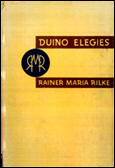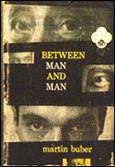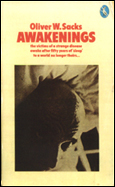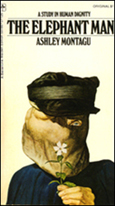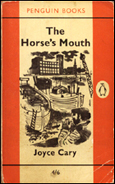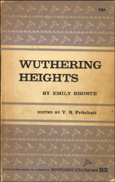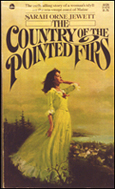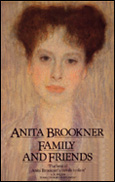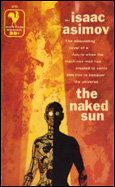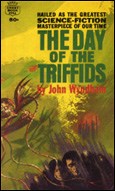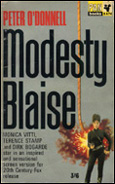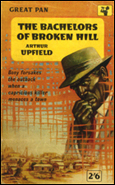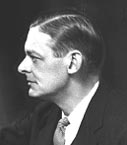 T. S. Eliot |
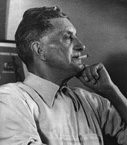 Arthur Upfield |
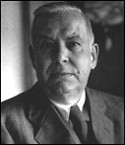 Wallace Stevens |
Reading
I
She was not a “reader.” I mean, she did not turn immediately to books, devour books, etc, as a print-junkie like myself did. She read slowly. Towards the end, as she herself said a number of times, she read with great difficulty.
When we married, she brought some books with her, and I was snotty about at least a couple of those—Ann Morrow Lindbergh’s Gift from the Sea and C.S. Lewis’s The Screwtape Letters.
But there was also the Anchor Books volume of Kierkegaard’s Fear and Trembling and The Sickness Unto Death, and a paperback volume by Jacques Maritain (who really mattered to her then), and Buber’s I/Thou, and the two-volume hardcover of Malraux’s Voices of Silence, and maybe Huizinga’s Homo Ludens. And Rilke’s Duino Elegies, in the double text translated by Leishmann and Spender. Also Gottfried Benn’s Trunkene Flut, and a collection of Brecht’s lyrics (in German) from Die Dreigroschenoper, and Conrad Aiken’s A Letter from Li Po, and Other Poems, and T.S. Eliot’s Collected Poems and Plays in hardcover, and Beckett’s Waiting for Godot, and a 1947 collection of very cosmopolitan essays by the expatriate Greek poet Demetrios Capetanakis, probably a gift from a friend.
Earlier she must have read Kahlil Gibran’s The Prophet, for she wrote, pseudonymously, a fine analysis of its appeal to adolescent girls. Our friend Tom Roberts told me later of overhearing a novelist at the University of Connecticut say, “The best thing ever written on The Prophet was by some girl in the old GSE” [Graduate Student of English]. And she kept the hardcover literature anthologies that she had used in classes at Gustavus.
II
She had no time for the fat bestsellers like Sophie’s Choice which some well-meaning friends, devout readers of the New Yorker and the New York Times Book Review, persisted in giving her as presents. But she had battled her way through William Gaddis’s Recognitions shortly before I met her, and she brought a paperback of Crime and Punishment into the marriage, and a Modern Library edition of Don Quixote with illustrations by Dali, and Lawrence’s Plumed Serpent, and I know she had loved Wuthering Heights and had a crush on Heathcliff.
And she liked B. Traven’s The Bridge in the Jungle and The Death Ship which I introduced her to in the Fifties when I “discovered” him, and dutifully made her way, early in our relationship, through Lawrence’s The Rainbow and Women in Love, which I insisted she read. (She’d read Sons and Lovers, The Plumed Serpent, and Lady Chatterly earlier.)
She loved Lawrence’s long lyrical essay “Flowering Tuscany” and the hilarious bravura paragraph in the long essay on his own paintings in which, set off by a young artist who remarks, “You do agree, don’t you, that technically we know almost all there is to know about painting?” he runs through all those different skills, culminating in “All these things the young man knew—and out of it, God help him, he was going to make pictures.” She also, where art was concerned, thought highly of Joyce Cary’s The Horse’s Mouth.
And she very much liked Sarah Orne Jewett’s Maine novel The Country of the Pointed Firs, which she read quite late, and the novels of Anita Brookner, and obviously I’m not recalling everything she read over the years.
Basically, though, I think she preferred to read either non-fiction or light fiction.
III
Van Gogh’s letters were very important for her. when she read them in the Fifties. Later, Wallace Stevens’ poems were central for her. And T.S.Eliot, I’m sure, was always a presence for her. She greatly admired Oliver Sacks’ Awakenings, which we read when it first appeared as a Penguin. She loved Ashley Montague’s book about the Elephant Man. I forget whether she read RD. Laing’s The Divided Self, or merely had to listen to me praising it. (I knew all too well what he was talking about.)
Later she discovered the philosophical doctor Lewis Thomas, and there were three books by him on her shelf in the bedroom when she died, along with several paperbacks by Gerald Durrell about his dealings with animals and the colourful members of his family, which she read and reread over the years. Here too I’m obviously not remembering everything.
IV
The light fiction that she enjoyed most was thrillers.
She tried a number of authors at my urging, though she didn’t care for some that I particularly admired, such as Dashiel Hammett, Donald Hamilton, Jonathan Latimer, Ross Thomas, the Len Deighton of The Ipcress File, the John Buchan of The Thirty-Nine Steps. She liked Adam Hall’s Quiller books a lot, and Martin Woodhouse’s, especially Tree Frog and Bush Baby, and Eric Ambler’s, especially Backround to Danger.
But the books that she read again and again and that became most fully part of her consciousness were Arthur Upfield’s Bony books and the Modesty Blaise books, or perhaps I should say Modesty Blaise and Willy Garvin books, of Peter O’Donnell.
V
She could have passed a pretty stiff examination on the Bony books. Upfield’s Australia was very real for her, with its extraordinary landscapes, its flora and fauna, its fires and droughts, its aborigine rituals, beliefs, extraordinary skills.
And I think that Bony, with his genuinely modest egalitarianism towards a lot of unpretentions ordinary people (“My friends call me Bony. Please call me Bony,”), his “arrogant” refusal to be intimidated by phonies and officious officials, his intent focussing on the task before him, and always his feeling that he can never, with his mixed and problematic background, afford, in terms of his own personal ethic, to lose a case—that in these and other respects Bony was not only a man whom she very much admired, but one who was in some ways paradigmatic of herself.
VI
I think she also liked Upfield’s sympathetic understanding of how people can go odd—at times “crook”—when out alone in “nature” or living in tiny communities widely separated from each other.
The books are full of reminders that nature is by no means always benign. One can be lost, emotionally, out on vast featureless plains, one’s whole psyche disintegrating. There are appalling droughts, going on and on beyond any point of fairness, until the last of the loved cattle that have lined up patiently at the small dwindling source of water are dead. There are raging bush fires. There are extra-large rogue waves on the coast that will come sidling in along the curve of a bay and snatch you off the rock where you felt yourself high up and secure.
And people have to find ways of accomodating themselves to strange existences. Some are simply naturally decent, their basically English values so much a part of them that they could not conceive of behaving otherwise. Some, usually young men, struggle to be absolutely normal and proper, but sexual pressures build until they turn homicidal or engage in forbidden relationships with abo women for which there can be no happy outcome for either lover.
VII
There are memorable presentations of crazinesses in the Bony books, some temporary, some permanent.
The Western Australia state hangman, Mr Jelly, rigidly conceals his occupation from all those around him in the small town where he lives, and the mounting strain during the period of an execution makes him increasingly savage towards his family and drives him into an alcoholic bender afterwards.
The likeable headmaster of an English-type boys’ school way up on the northwest coast in the town of Broome, descends into elaborately ritualized and meticulously executed nighttime stranglings of middle-aged widows.
A middle-aged woman poisons middle-aged men in bars because their sloppiness reminds her of the homicidal brother whom she loathes and with whom she once formed part of a conjuring and knife-throwing act. The scene in which the two of them, both speaking perfectly rationally, confront and finally kill one another is one of the most powerful pieces of writing in the series.
VIII
C. liked figures who lived successfully with, or by means of, a kind of controlled craziness, like the incurably alcoholic remittance man Mr. Dickenson in The Widows of Broome who may be reduced at times to drinking a few drops of battery acid in water but who is always a gentleman.
She especially liked the accounts of how when the now old Mr. Luton was a bullock driver, he and his sideman would go on total raging two-week-long blind drunks while they were in town, but would then, after painfully sobering up on the trail, remain totally without alcohol during their months out in the bush. The benders, which reached the point of D.T’s, were of course a reaction to those periods of ultra-demanding physical activities.
And even now, retired and living comfortably on his own small bit of land beside a river in a green landscape, Mr. Luton would from time to time descend into the elaborate ideal bar that he had built in his hidden basement, and proceed very deliberately to get totally drunk, and end up in his bathrobe outdoors, whirling his great bullock whip around his head, and cracking it among the eucalyptus trees behind his house, and bellowing at them and cajoling them as if they were his long dead bullock team.
“A man has to love something. What is love? You tell me. . . . And the trees nodded and began to chew their cud, and old Squirt turned his great head with the sawn-off horns to watch his master depart.”
IX
I fell away from Upfield after a while, but both of us stayed with the Modesty Blaise books until the end. We didn’t play trivia games, but scene after scene was vivid for us in the same way, and there were a number of phrases from the dialogue that we used from time to time to each other in a shorthand way—“up the sharp end,” “someone who would be improved by killing,” “Don’t walk away from me now, Princess,” “made him a bit pensive,” “Talk, talk, bloody talk”, “Squeegees and mops,” “I’m no’ that kind o’ a fule,” “One of the tuneful kiddies,” and others.
I’m sure that Willy was another ideal male for her—strong and swift when violent action was necessary, gentle, humorous, compassionate at other times, fundamentally good natured, gifted with the ability to enjoy lots of things, wonderfully competent, and unshakeably loyal towards Modesty.
But obviously it mattered even more to have a woman hero with whom she could identify.
At one point, during a workout, Modesty is technically defeated but keeps going, and Willy says admiringly that she’s always trying something new. I think that C. herself was always trying something new, whether she was altering recipes and dress patterns, or pulling up dried Provençal weeds and dipping them into her ink and drawing with them, or dropping coloured inks on a sheet of glass, and laying paper on it, and building up images on the basis of the colour areas.
Like Modesty, she was intensely professional—knew the amount of sheer hard focussed effort that was required in order to accomplish anything worthwhile. But like Modesty she was also a natural anarchist, or at least a natural resister of mechanical routines and formulae with respect to the “right” way of doing things. When Modesty enrages a fencing instructor by making a hit in the “wrong” way, she calmly says, “But it worked, didn’t it?”
X
I think that C.’s Zen-like professional seriousness, like Modesty in her relationship to literally life-or-death doings, went way beyond the formulaic.
Like Modesty, too, she unabashedly enjoyed “small” things, could relax, did not feel obliged to go around playing the heavy. To some, Modesty seemed merely a beautiful (if “enigmatic”) woman. C. (so beautiful herself when she made a point of dressing up) no doubt seemed to a number of people someone who obviously couldn’t be a really serious, let alone major, artist. And I don’t think that that bothered her usually, any more than Modesty was bothered by snobs and fools. Modesty, with the gift of friendship, also had her sustaining friendships, some professional, some with quite ordinary people.
Above all, Modesty had Willy Garvin.
XI
I hardly dare suggest it (I can sense a quizzical expression starting to form on her face, and I know that I have much more in common with the to me insufferable Woody-Allen-type ex-academic Steve Collier than with Willy), but maybe she felt that she had, at least, my loyalty, and that it was an honest and to some degree informed loyalty—that when she asked my opinion about a painting or drawing I would give it honestly, and that when I said that I liked something, I really did like it.
I never knew what the works were “about,” or tried to talk about what they were “about” and I’m sure she wouldn’t have wanted that.
But I could at least say that some area of a canvas seemed a bit cluttery, or a bit underdeveloped, or not quite right in some indefinable way. And she usually did something about it. And when faced with a number of drawings or watercolours laid out on the floor, I could usually say which ones seemed to me to really work—at times work very well indeed—and which seemed somehow to not be quite all there or not quite come off. And usually these opinions seemed to coincide with hers.
It was an extraordinary visual education that I received over the years from looking at her work.
XII
I shouldn’t forget, either, that Geoffrey Household’s Rogue Male was another thriller that she read again and again.
I think she entered perfectly into the consciousness of its upper-class narrator, on the run after being caught with a long-range sporting rifle near Hitler’s Berchtesgaden, and writing down his narrative while he is on the run.
He lives in a sense by his own code, which fits loosely within the broader code of gentlemanliness, and is not bothered by breaking the law per se, or morally intimidated by the apparatus of government and law-enforcement. Society as a whole is hardly there for him as he concentrates on solving this particular problem, and this, and this that he encounters during the hunting of him.
But there are things that he can’t bring himself to do, he feels guilty, about certain of his actions, and as he writes his memoirs he discovers that his motives during his sporting stalk had not been quite as simple as he had supposed.
I know that she enjoyed his three-dimensional consciousness of the Dorset countryside in which a good deal of the action takes place—his consciousness of that countryside, his integration of himself into it until he becomes almost animal-like. I suspect that his burrow in the side of a deep and overgrown lane that was first a refuge and then for awhile a prison was some kind of paradigm for her. I know that she loved the wild tomcat Asmodeus who lives in the lane and whose friendship the narrator slowly and patiently wins.
She liked the respectful presentation of animals in several of Household’s other novels— The Courtesy of Death, The Spanish Cave, The Dance of the Dwarves. She pointed out to me the centrality of hunting and being hunted in Household’s works. She was interested in his general interest in caves and other underground places.



